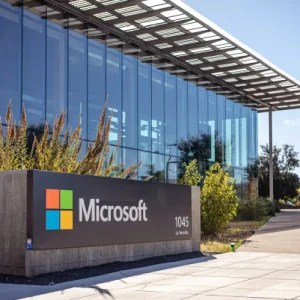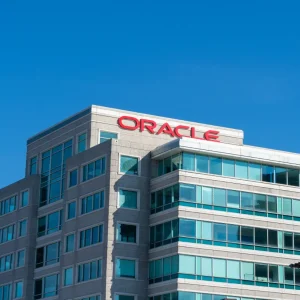
For all the disruptive potential of the internet, it still reflects many long-established global inequalities. According to data collected by the United Nations, more than 20% of the world’s population does not have access to 4G network coverage or better. In Eastern and Western Africa, the proportion without access rises to more than 73% of the population.
The solution to this global digital divide may lie among the stars. Pioneering satellite broadband projects by the likes of SpaceX, Amazon and OneWeb promise to extend global internet coverage and reduce the price of access.
Satellite broadband constellations will slash the cost of data just as demand explodes from new IoT and cloud-related tech, according to estimates from Morgan Stanley. The per-megabyte cost of wireless data will soon be less than 1% of today’s level, the investment bank predicts.
The disruptive potential for satellite internet lies in serving poorly connected regions as there are limited benefits for urban and suburban areas with adequate coverage from legacy providers, says Babak Beheshti, dean of the College of Engineering and Computing Sciences at the New York Institute of Technology.
“In remote rural areas in the developed world, as well as vast areas in the developing world, satellite internet would be the only practical means of providing connectivity to the people,” he says. “This would be the technology to close the digital divide.”
The race to build satellite constellations that deliver low-cost, high-speed internet is fuelling astronomic growth in the global space economy, which is projected to be worth $1trn by 2040, according to Morgan Stanley. Satellite internet will account for between 50% –70% of the market’s growth, it expects.
Elon Musk’s SpaceX is currently leading the market, with clearance to launch as many as 12,000 of its Starlink satellites into orbit by 2027 and ambitions for a further 30,000 pending approval from regulators.
The UK’s OneWeb, which narrowly escaped bankruptcy earlier this year, is another leading satellite broadband operator. The government-backed operator plans for a modest constellation of 648 startups by the end of 2022. Together SpaceX and OneWeb account for more than 50% of the venture investment in space startups between 2014 and 2019.
This year, Amazon also threw its hat into the ring with the launch of its own broadband satellite constellation programme, Project Kuiper. Jeff Bezos’ $10bn venture is yet to put anything into orbit, but it plans to launch 3,236 low-earth orbit (LEO) satellites as part of its efforts to extend broadband coverage to rural parts of America.
In its filing to the regulator, Amazon touted Project Kuiper as driving wider economic development through second-order benefits on education and industry. The tech giant also sees the project supporting the work of first responders, government agencies and disaster relief organisations.
Space X is already the organisation boasting the most satellites in orbit – more, in fact, than the five next-biggest operators combined. This number will soon ramp up as it currently launches 60 of its Starlink satellites into orbit every two to three weeks.
Given the sheer number of SpaceX satellites in orbit, it is hardly surprising that the US is leading the commercial space race. Innovation is driving advances in the technology used to build and launch satellites, and America’s tech giants – Amazon, Tesla and now Microsoft – are using their market leadership on Earth to undercut competition in space.
The UK comes in second by number of commercial satellites as the home of OneWeb’s headquarters, but the US has still launched nearly ten satellites for every one put into orbit by UK operators.
The exponential increase in the number of satellite launches projected over the next few years is a by-product of more advanced manufacturing methods and increased demand for connectivity. OneWeb, which builds its satellites in conjunction with aerospace giant Airbus, can now produce two satellites a day and at a fraction of the price it once faced. The average cost of launching objects into space has fallen by about 85% since the millennium, according to Deloitte.
As a result, space will soon be home to thousands of LEO satellites and, by 2025, satellites used for communications will account for almost half of all launches. The race to build satellite broadband mega-constellations is only just beginning, but it promises to open new frontiers for digital innovation.






